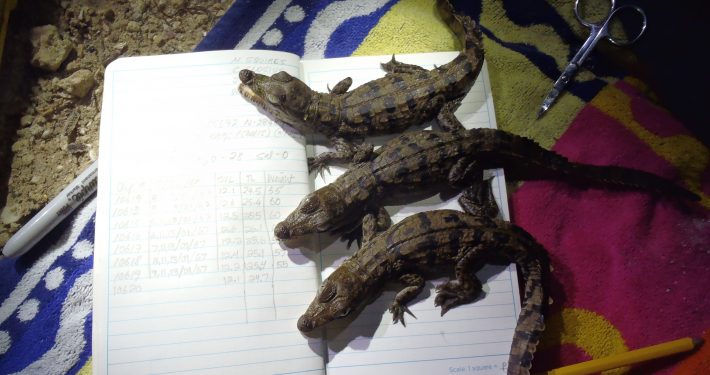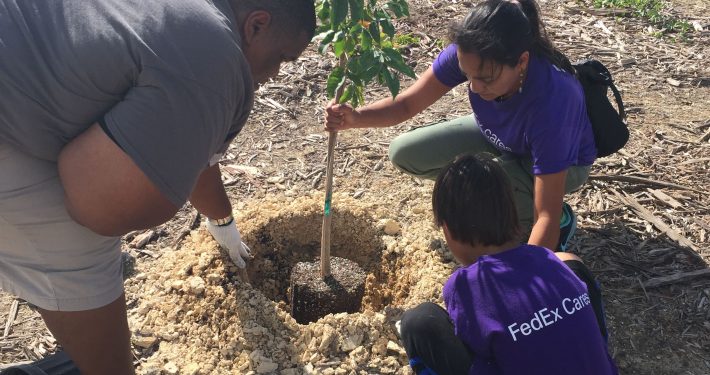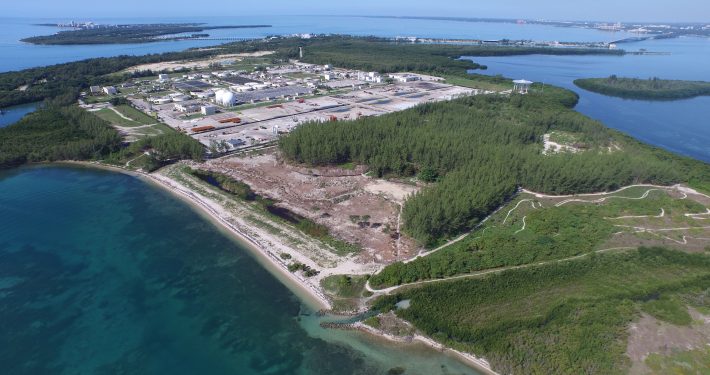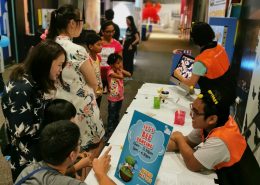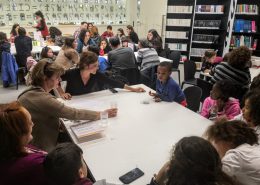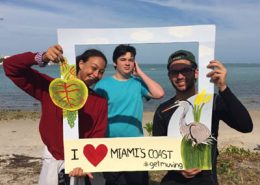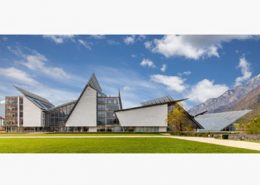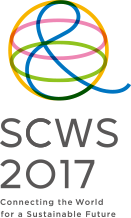Patricia and Phillip Frost Museum of Science’s MUVE (Museum Volunteers for the Environment) Program
By Fernando Bretos
SDG Goal 15: Protect, restore, and promote sustainable use of terrestrial ecosystems, sustainably manage forests, combat desertification, and halt and reserve land degradation and halt biodiversity loss
A visit to a science center can be a memorable event; once inside, you can experience a designed, interactive world where science comes alive. There is also value in compelling guests to leave the museum, and get out into nature. An outdoor experience full of sensory connections can be key to building a community committed to environmental conservation, while reinforcing the learning. Nature, with its noises and smells and sights—the wind through dune grass or the feel of a tree’s bark—allows us to learn intuitively.
In his book Last Child in the Woods, Richard Louv coined the term “Nature Deficit Disorder,” alluding to the extent to which youth are spending more time indoors compared to earlier generations, and suffering detrimental effects because of it. Research has also shown that direct exposure to the natural world is essential for healthy childhood development, reducing stress and sparking creativity. Nature Deficit Disorder results in people feeling disconnected from nature, and as a result, there are fewer people willing to take action to care for the environment.
As a counterbalance, Frost Science’s Museum Volunteers for the Environment (MUVE) engages volunteers in habitat restoration projects. MUVE’s approach is to encourage people to Act, Learn, and Engage—the same approach that underpins the museum’s overall effort to educate Miami residents about science and nature. MUVE takes this a step further by giving people an easy avenue to get out and do something, to take direct action in reversing the trend of environmental degradation our planet faces. MUVE works primarily with primary schools, universities, and local corporations.
The program employs science-based outdoor activities, eco-art, and social media to empower Miami residents to restore coastal habitats. Participants first learn about the environmental stresses South Florida faces, engage themselves and their peers in making a difference, and act together in restoring native habitats and the ecological and economic services they provide.
Each year, MUVE volunteers remove invasive plants, replant native habitats, and monitor the success of their work in ensuing years through citizen science. The project’s volunteers have replanted mangroves, freshwater wetlands, riparian zones, dune habitat, and coastal hardwood hammocks. In doing so, they learn that South Florida’s unique subtropical vegetation provides shelter for native organisms above and below the water line, stabilizes our shores, protects our city from storms and sea level rise, and serves as a nursery for commercially valuable fish. Since its inception in 2007, MUVE has engaged over 7,000 volunteers in restoring over 25 acres of native habitat. We work with local government agencies that identify and prepare local public lands for restoration. We then apply for funding, mostly from federal and corporate restoration grants, which provide plants and volunteer support.
At its current restoration site at Virginia Key—an uninhabited barrier island off the coast of downtown Miami—MUVE has restored a historical dumping location into an urban wilderness by removing invasive plant species and replacing them with native grasses that stabilize the shoreline. This has allowed native flora and fauna to colonize the restored habitat.
The coastal habitat restoration on Virginia Key has become a living classroom for Frost Science, and a buttress against Nature Deficit Disorder. Local students have a chance to collect environmental data, log marine debris, plant native vegetation, and observe marine and coastal life. These environmental monitoring projects invite Miami’s residents to strengthen their connection with nature through scientific observation, data collection, and analysis of the long-term effects of the restoration efforts on the ecosystem’s success. In order to expand our ranks of volunteers at our new state-of-the art-museum, which is under construction, we will embed sign-up prompts within our aquarium exhibits, to direct visitors to outdoor opportunities provided by MUVE.
Our MUVE volunteers not only become scientists for a day, they also feel the joy of discovery and can take pride in giving back to nature and Miami. In the end, volunteers leave behind a living legacy of native habitats that they can return to visit and enjoy in perpetuity.

